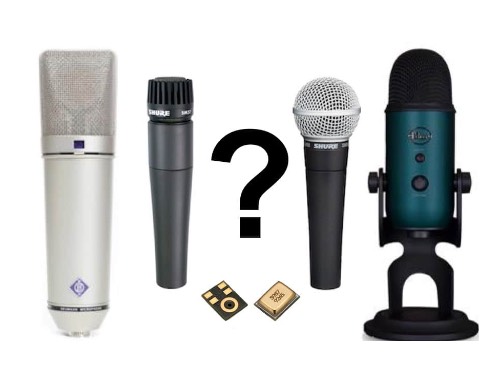
Microphones - Using the right tool for the job
How does a Microphone Hear?
The way a microphone responds to sound and the way we hear are vastly different. Understanding this difference will help you understand how to use microphones properly.
Human Perception of Sound
God has blessed most of us with an incredible mechanism to perceive sound We perceive a wide variety of sound characteristics such as:direction, loudness, pitch, etc. We can make mental choices of what we desire to listen to. This allows us to focus our hearing on what we choose to listen to.
Microphones Response to Sound
In contrast to the human hearing system, a microphone is a crude and simple device used to pick up sound vibrations. Actually a microphone only contains one faction of the human hearing mechanism, just a diaphragm which converts sound vibrations to electrical energy.
How is a microphone different?
It has no second "ear' to allow it to perceive direction
It has no brain, which allows it to choose what it wants to hear, and what it will focus upon.
The microphone will always give preference to whatever sound is the loudest at the microphone, even if it is not the sound wanted.
Basic Principles of Microphone Placement
Microphone placement for sound reinforcement through a live sound system differs from microphone placement for recording of for broadcast. The two situations will require separate approaches. We will concentrate on microphone technique for sound reinforcement.
What is the proper microphone placement?
Microphone placement can be anywhere from 2" to many feet. Depending on the source to be recorded or reinforced and the type of microphone to be used. First I think we need to cover some basic microphone types along with pros and cons.
Dynamic
Microphone construction is similar to a small loudspeaker.
The diaphragm moves as the sound pressure varies, producing a small signal voltage at the output.
Pros - Most reliable of all types
Cons - Difficult to achieve high sensitivities
Applications
- Solo vocal mics
- Lapel Mics
- Paging and public address
Condenser
Microphone element is actually a Small capacitor (their primary purpose is to store energy). A small voltage is applied to it with a battery or phantom power. As the sound pressure varies, the voltage is "modulated" by the diaphragm movement.
Pros- High sensitivities can be achieved. Good for remote micing.
Cons - Requires battery or phantom power. More fragile than dynamic mics.
Applications
- Solo vocal mics
- Lectern Mics
- Choir Mics
- Pressure - zone mics
There are other microphone types such as ribbon, noise canceling, electret condenser, but they are primarily used in recording, and specialty applications, i.e. announcer mics, factory paging, aircraft.

